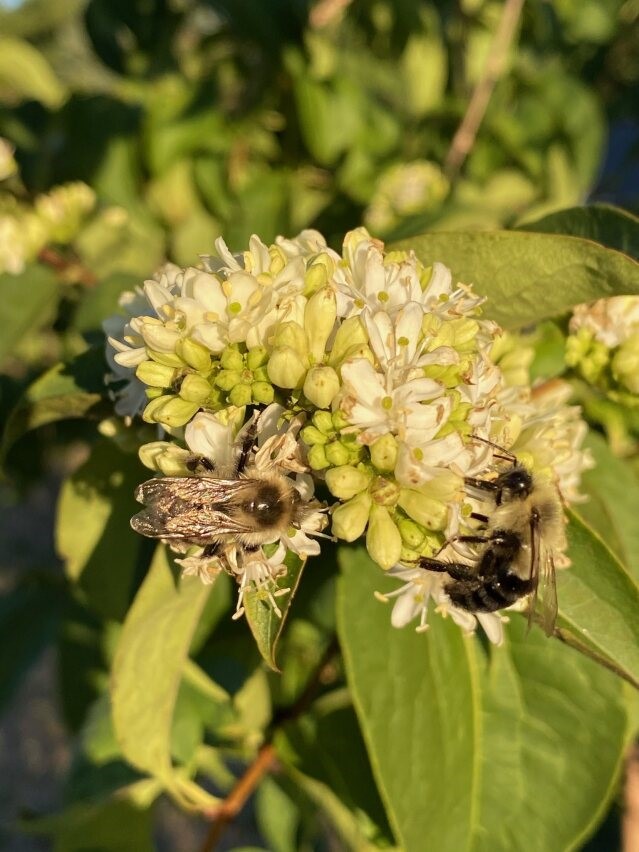
Bring in the Bees!
Every plant that requires an insect pollinator will have devised strategies to attract the type of pollinator it needs, but some plants draw a real profusion of bees, particularly in late summer and fall. If you have a sunny spot and are looking for colorful plants that attract plenty of bees here are several that are pollinator magnets.
New York Ironweed (Vernonia noveboracensis) is tall growing and at 5-7’ tall is a native for the back of the border. Producing loose clusters of bright purple flowers it is visited by bees and butterflies. While it prefers moist soil it will grow equally well in regular garden conditions. If something shorter is required, look out for the shorter and more delicate V. lettermannii “Iron Butterfly” which gets to about 4’ tall with the same deep purple flower clusters.
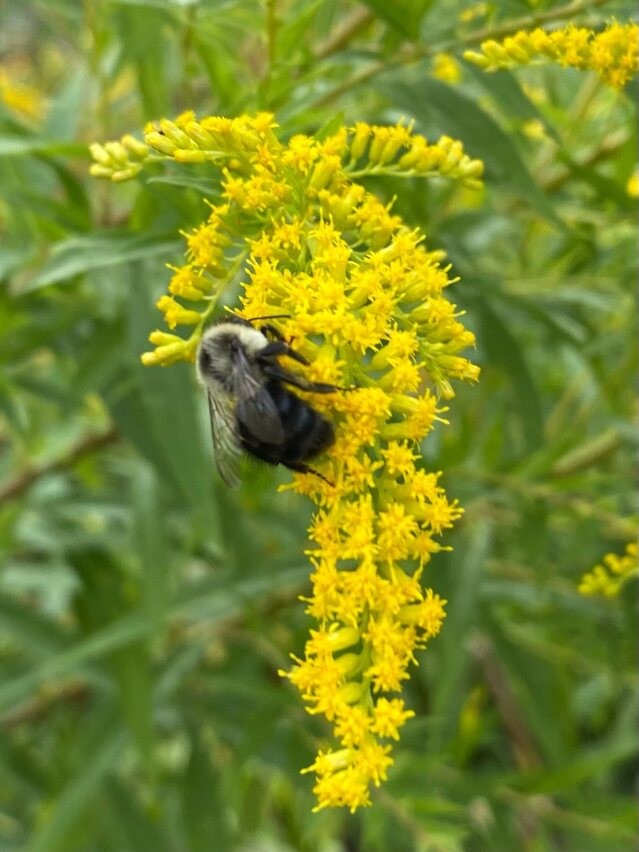
Perfect companions for ironweed are the bright yellow flower heads of goldenrod (Solidago spp.) Canada goldenrod (S. canadensis) is a common sight in New England and given favorable conditions will grown 4-6’ tall. Bees love its many flowers and on warm days will be found busily swarming all over the flower heads. S. rugosa “Fireworks” offers a more compact plant and if space is at a premium, the tiny S. rugosa “Little Lemon” offers the same flower benefits on a 12” tall plant.
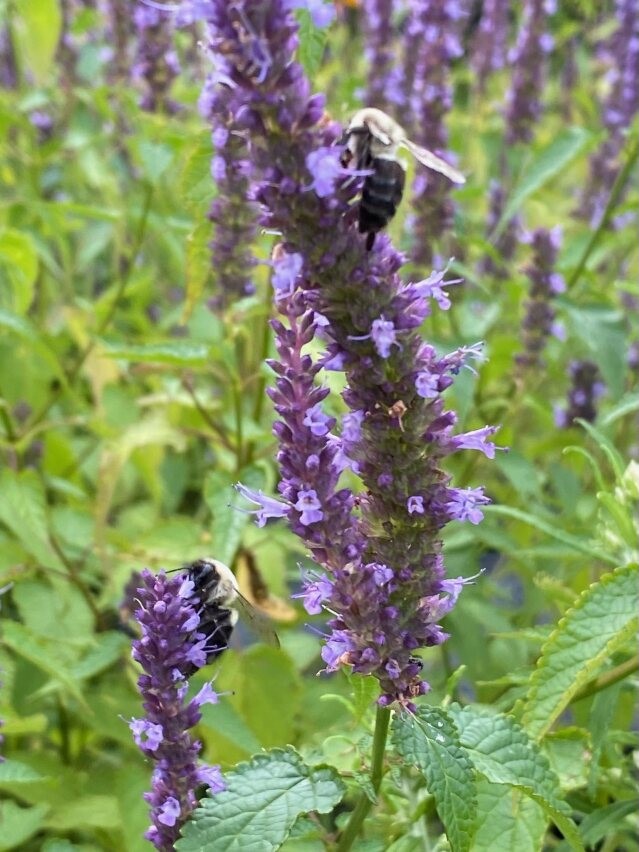
Anise Hyssop (Agastache foeniculum) with its candles of purple blue flowers is a northern native perennial that also brings plenty of bees to the garden. Many native agastache are naturally found in the south-west of the country where they are adapted to heat and drought. Fortunately for gardeners in the north-east, cultivars have been bred to give us the orange, pink and red flowers of these hummingbird mints while having greater tolerance for cold and moisture that our gardens bring.
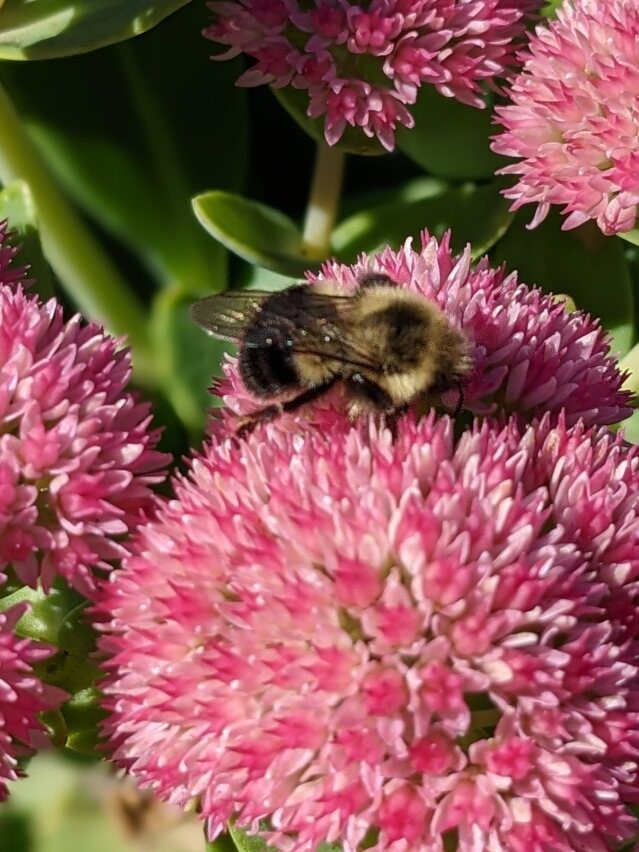
Sedum in all its forms is another perennial that brings bees in numbers. The succulent pink flowered cultivars such as Hylotelephium spectabile “Autumn Joy” provide the perfect landing pad for bees to feed. Growing for the most part between 1-2’ tall these perennials make a colorful statement at the front of the border as their foliage is also attractive. Most cultivars have bluish-green succulent leaves, but H. telephium “Matrona” has purplish red leaves while H. spectabile “Frosted Fire” has attractive variegated foliage.
While butterfly bush (Buddleia spp.) is well known for its ability to attract pollinators, bluebeard (Caryopteris spp.) is another shrub that hums with busy pollinators when in bloom. With delicate aromatic foliage gray-green or golden in color, this drought tolerant sub shrub produces clusters of blue flowers that bumble bees love.
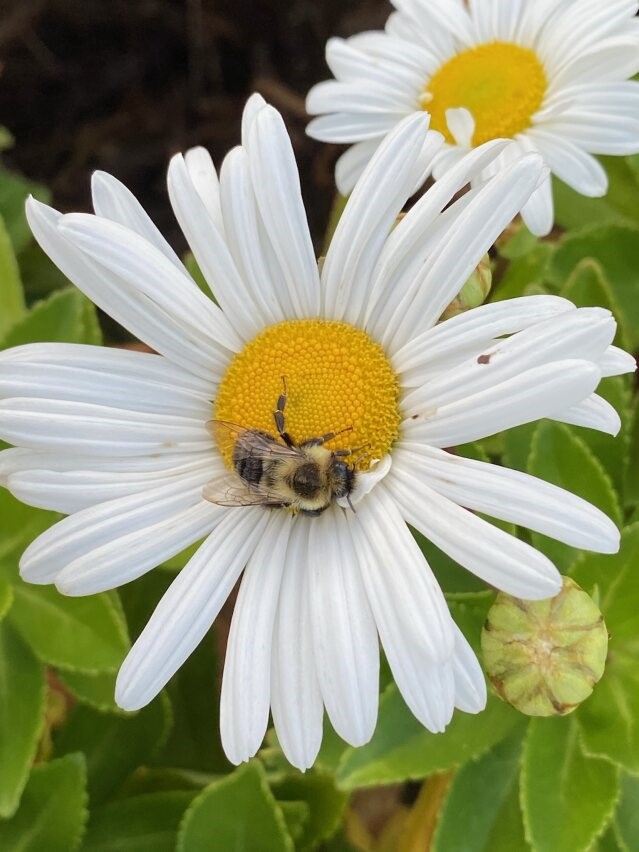
Daisies are always popular with pollinators and in late summer and fall there are two types of this perennial that particularly draw in the pollinators. Asters in all their forms are attractive to bees, and native species are adapted to both sun and shade. New England asters (Symphyotrichum novae-angliae) love the sun, while those such as white wood aster (Eurybia divaricata) and big-leaf aster (E. macrophylla) prefer shady conditions.
Montauk daisies (Nipponanthemum nipponicum) are a favorite of mine as they extend the flowering season well into fall, often into October. They are popular with the last of the season’s pollinators, bees and butterflies alike, and mature plants can form a shrubby mound up to 3’ high and wide. As their stems do not die back each winter, the trick to keeping them looking good is to prune them back by about half each spring to encourage sturdy and bushy new growth.










